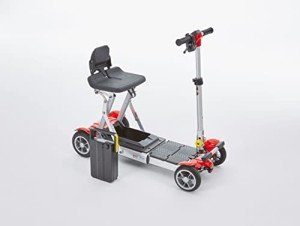Understanding Mobility Aids: Enhancing Independence and Quality of Life
As society continues to age and individuals progressively seek methods to maintain independence, the demand for mobility aids has actually never ever been more pertinent. Mobility aids, which incorporate a series of devices developed to assist individuals with walking or moving, play an important function in promoting mobility, enhancing security, and enhancing total quality of life. This article will explore the different kinds of mobility aids, their benefits, factors to consider for selection, and address some often asked questions.
Types of Mobility Aids
Various mobility aids are available, each created to resolve specific needs. The following table summarizes some of the most typical kinds of mobility aids and their functions.
| Kind Of Mobility Aid | Description | Best Suited For | Key Features |
|---|---|---|---|
| Canes | A portable stick offering support and balance. | Individuals who need very little support. | Light-weight, portable, adjustable height. |
| Walkers | Four-legged frames offering stability. | Those needing considerable assistance while walking. | Foldable, some with wheels, added security functions. |
| Rollators | Wheeled walkers with a seat for resting. | People needing mobility with the alternative to rest. | Brakes, baskets for personal products, adjustable height. |
| Wheelchairs | Chairs with wheels for people with minimal mobility. | Those unable to stroll or requiring extensive assistance. | Manual or powered choices, personalized seating. |
| Scooters | Motorized devices for larger ranges. | People with limited stamina however requiring self-reliance. | Various sizes and designs, frequently transportable. |
| Crutches | Assistance devices positioned under the arms or forearms. | Individuals recovering from lower limb injuries. | Adjustable, lightweight, needs upper body strength. |
| Stairlifts | Mechanical devices for moving between floorings. | Users dealing with obstacles in multi-level homes. | Adjustable for different staircases, automated. |
Advantages of Mobility Aids
Mobility aids offer a range of benefits that can significantly improve the lives of people dealing with mobility difficulties. Some notable advantages consist of:
- Increased Independence: Mobility aids empower people to move easily without relying on others for help, thereby enhancing their self-confidence and self-esteem.
- Boosted Safety: Using mobility aids can decrease the danger of falls and injuries, specifically for older adults or those with balance problems.
- Enhanced Quality of Life: By helping with mobility, people can participate in social activities, participate in events, and enjoy life more totally, contributing to much better psychological and mental health.
- Rehabilitation Support: After surgery or injury, mobility aids provide essential support and stability, helping in recovery and rehab procedures.
- Accessibility: Many mobility aids are developed to be used both inside and outdoors, making sure that individuals can browse different environments with ease.
Aspects to Consider When Choosing Mobility Aids
Selecting the suitable mobility aid requires mindful factor to consider of numerous aspects, including:
| Factor | Factors to consider |
|---|---|
| User's Needs | Examine the level of mobility needed; think about whether the user needs temporary or long-lasting support. |
| Physical Limitations | Examine the user's strength, balance, and coordination to figure out the very best kind of help. |
| Setting | Consider the main environments where the aid will be utilized, such as home, outdoors, or specific terrains. |
| Weight and Portability | Guarantee that the selected device is workable concerning portability and storage, especially for outside use. |
| Spending plan | Mobility aids can be found in a series of costs; consider insurance coverage and offered funding alternatives. |
| Adjustability | Choose aids that can be adjusted for height and convenience to accommodate development or changing requirements. |
Frequently Asked Questions About Mobility Aids
1. How do I know if I need a mobility help?
Numerous aspects can signify the need for a mobility aid, such as difficulty strolling or stabilizing, tiredness while standing, or a current surgical treatment impacting mobility. Consulting with folding mobility scooters for sale can offer guidance customized to private requirements.
2. What types of mobility aids are covered by insurance?
Protection differs between insurance providers, but a lot of offer alternatives for resilient medical devices, which typically consists of wheelchairs, walkers, and some kinds of canes. Check with your insurance coverage provider for particular protection information.
3. Can mobility aids be used outdoors?
Yes, many modern mobility aids are developed for outdoor use. Rollators, scooters, and some walkers are geared up with features for stability and ease of use on various surface.
4. How do I maintain my mobility aid?
Routine maintenance includes inspecting for any wear and tear, ensuring that parts such as wheels, brakes, and frames are operating correctly, and cleaning up the equipment as needed. Following the manufacturer's guidelines is crucial for security.
5. Is there a danger of ending up being based on mobility aids?
While some users might end up being reliant on mobility aids, they are developed to promote self-reliance and mobility. Gradually using a mobility aid can boost confidence and aid keep physical strength and coordination.
Mobility aids are invaluable tools that empower people to overcome physical challenges, promoting independence and enhancing lifestyle. By understanding the numerous kinds of mobility aids readily available, their advantages, and essential elements for consideration, households and caregivers can make informed decisions that best satisfy the requirements of their liked ones. With the right assistance, those with mobility obstacles can lead satisfying and active lives, totally free to check out the world around them.

